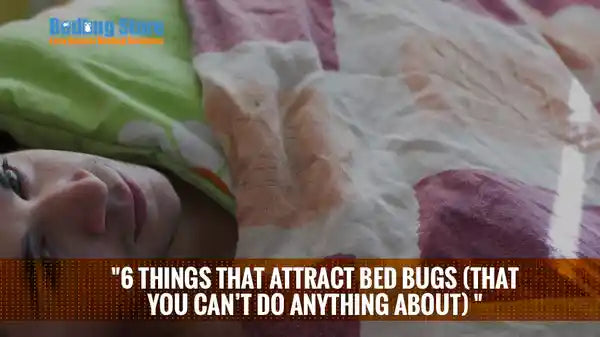In the Night They Come – An Exploration Into the Realm of Bed Bugs
Published on December 06, 2019 by Alana Korol

Many consider sleeping quarters sacred. It's within this comfortable structure that you lay your head and obtain much-needed rest and recuperation; however, for millions throughout the world, something more sinister lives between the sheets—bed bugs. These insects, often referred to as parasites, are masters at sneaking into your most beloved resting areas. While you rejuvenate your mind and body, they are hard at work feeding on your blood and wreaking havoc on your peace of mind.
Bed bugs have been infesting the homes and beds of humans for thousands of years. While these creatures are not known to spread disease, their bites and alienability to withstand many conditions make them one of the most successful parasites for warm-blooded mammals, specifically humans. If you find yourself resting in a nest of bed bugs, you likely have no other desire than to eradicate these annoying, persistent, and physically aggravating pests swiftly. While many synthetic chemicals and natural treatments are designed to kill off an infestation, the most crucial step in this intense battle is knowledge. The more you understand about bed bugs, the easier it is to eradicate these pests from your life.
A Brief History Into the World of Bed Bugs
When you're faced with a bed bug infestation, you likely aren't wondering about the origins of these creatures. However, the story of bed bugs is one spanning thousands of years. According to a study published in the Molecular Ecology journal, researchers believe modern bed bugs originated from bats. Throughout time, these blood-sucking pests moved from their winged hosts into the sleeping quarters of a more formidable host—humans.
The earliest known evidence of bed bugs dates back roughly 3,500 years to ancient Egypt. Along with literary references in some of the oldest Egyptian manuscripts, archaeologists have discovered fossilized bed bugs throughout the Middle East. While this intrigues scientists and archaeologists, how does such a simple creature survive throughout the centuries? Their survival rate and ability to travel the globe rests on their ability to sustain entire colonies through inbreeding. Studies found that the common bed bug may go through several rounds of inbreeding without experiencing detrimental effects on its health or longevity. The only requirement to live is mammal blood.
It's believed bed bugs found their way to North America – partly by hitchhiking on boats, in clothing, and among the belongings of early-settlement Pilgrims. Throughout the following generations, bed bugs thrived in the New World; however, this changed in the 1950s when potent pesticide treatments nearly eradicated all bed bugs from American cities. For almost three decades, it seemed humans had finally won the ancient battle between man and bug. Yet, this changed in the mid-1980s. After several reported outbreaks, scientists were astonished that bed bugs had returned with a vengeance.
As our populations grew, so did bed bug resistance to traditional insecticides known as pyrethroids. Roughly 90 percent of household bed bugs have adopted a unique mutation, allowing them to survive many insecticide treatments. As we enter the 21st Century, we face an entirely new set of challenges within the realm of bed bug treatments.
Sleep Tight, Don't Let The Bed Bugs Bite—How Bed Bugs Enter Your Home
By their very design, bed bugs are stow-a-ways. Professional hitchhikers by nature, these creatures are as thick as a credit card and measure roughly 5 to 8 millimeters long. Their agile bodies and swift reflexes allow them to sneak into the tiniest creases of luggage, boxes, and clothing and be unknowingly transported into your home. These creatures may live for months without blood and even survive for over a year by entering into a "dormant" state until they feel the heat of a warm-blooded body within their proximity. Because a single female bed bug can lay upwards of 500 eggs throughout her lifetime, what starts as a few bed bugs can quickly proliferate into a vibrant and thriving colony.
These sneaky creatures tend to sleep and hide throughout daylight hours, which makes them even more challenging to locate and identify. However, as night falls, their thirst grows. Various studies suggest that bed bugs become active an hour before sunrise. Although controlling and eliminating a bed bug infestation can be one of the most challenging tasks you're charged with, by adopting a thorough inspection and treatment program—either performed by yourself or a professional—you can win this ancient battle between humanity and insects.
Our natural, plant-based Bed Bug Patrol Killer Spray provides an all-natural solution to infestations of bed bugs, as well as fleas, spiders, and other common indoor bugs. Our 100% natural solution is made in the USA. It relies on the power of natural ingredients like citric acid, clove oil, and peppermint oil to naturally deter these bugs from living in your furnishings and upholstery. Just spray our solution on affected surfaces twice per day, and it will get to work on exterminating your bed bugs and preventing their return. To keep you safe from bed bugs on your travels, arm yourself with our Bed Bug Blasting Travel Spray, which comes in a handy, TSA-approved travel-size bottle for your convenience.
Hear From Our Founder, Bill Carlson.




